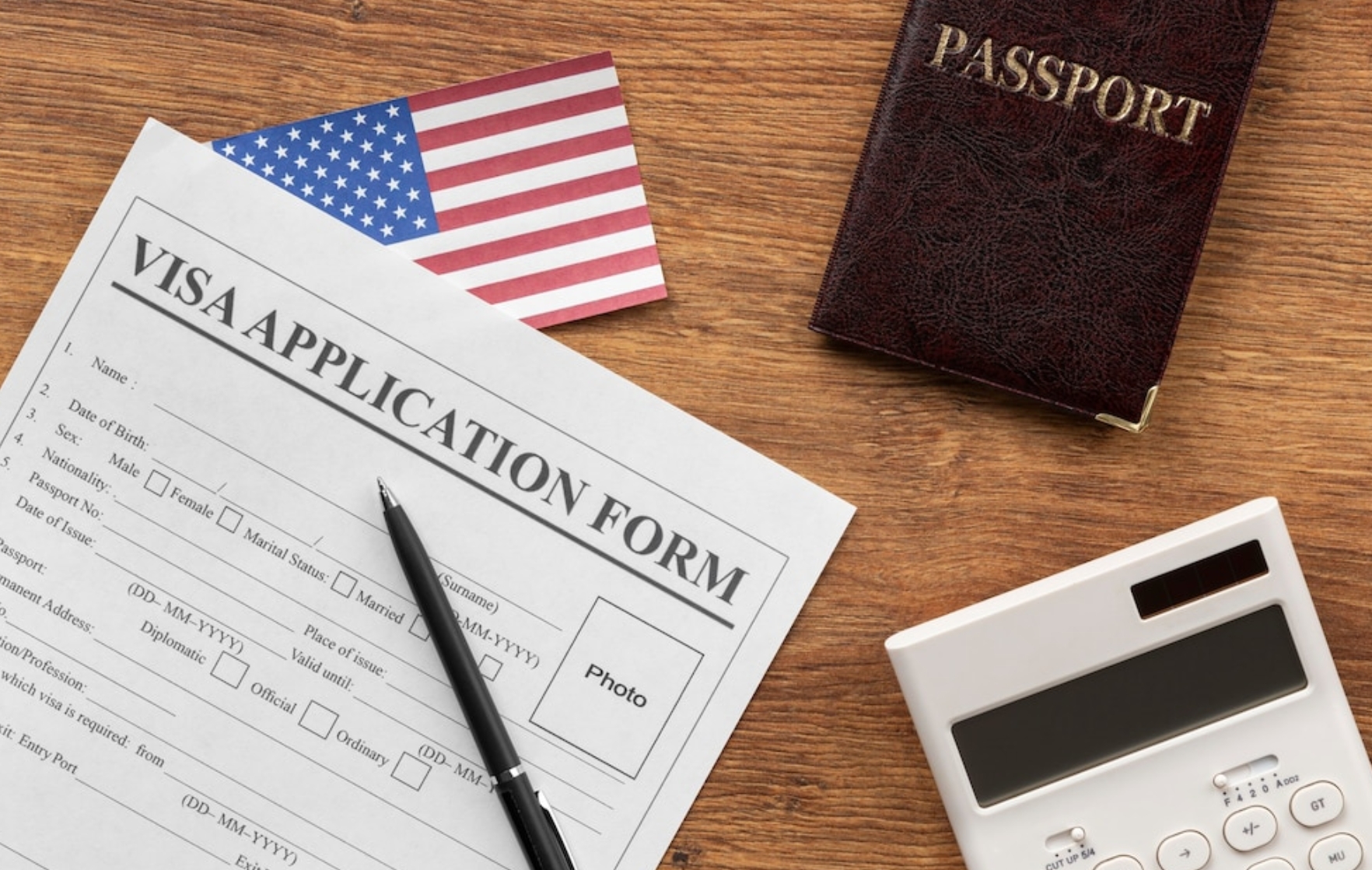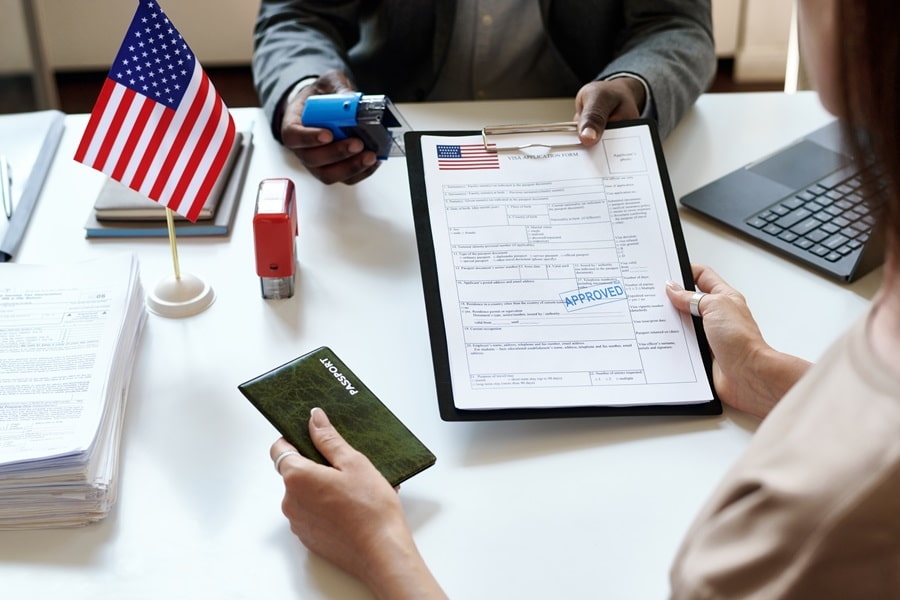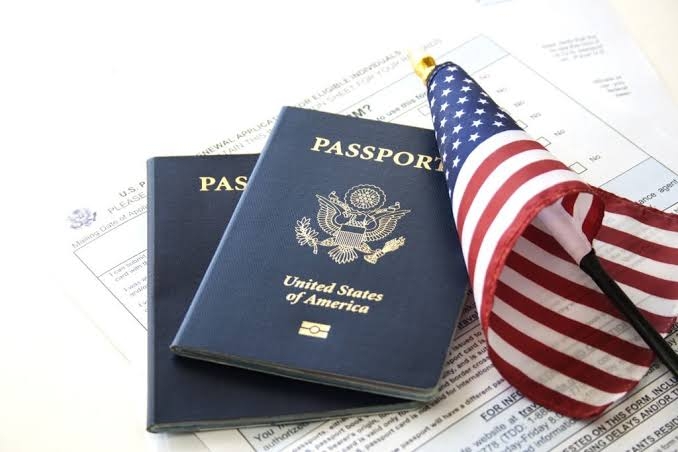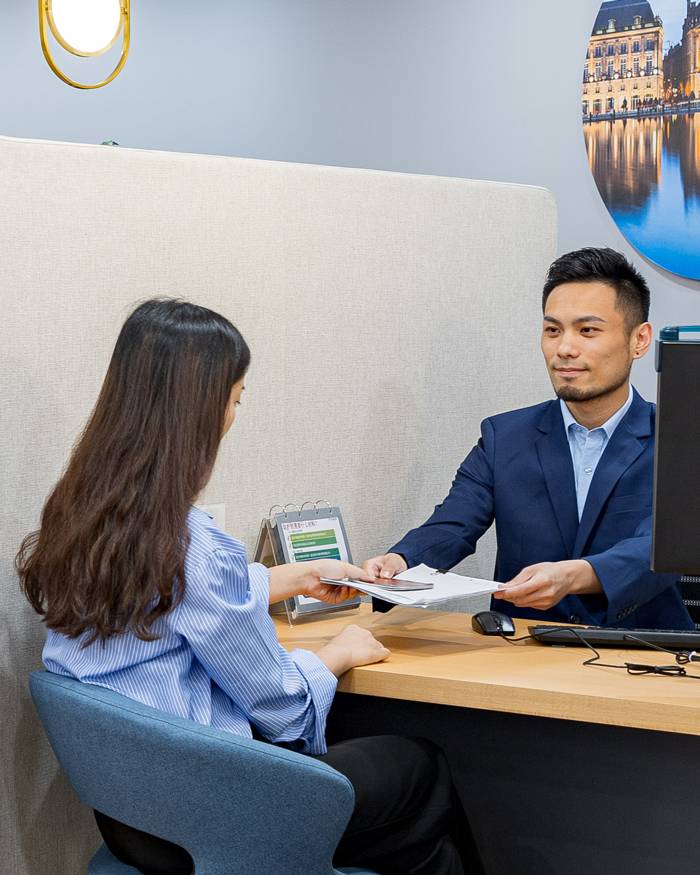Applying for a U.S. work visa can feel overwhelming, but with the right steps and preparation, you can make the process smoother. This guide breaks down each stage clearly to help you apply with confidence. Whether you’re a student moving to a work visa or a professional with a job offer, knowing what to expect is key. From choosing the right visa to gathering documents and avoiding delays, this step-by-step guide gives you the information you need to get started the right way.
Determine the Appropriate Work Visa Category
The first and most important step is identifying the right type of work visa based on your qualifications, job offer, and the nature of the employment.

Temporary (Non-Immigrant) Work Visas
These are suitable for individuals planning to work in the U.S. for a limited period. Each category has its own eligibility criteria and purpose:
- H-1B Visa: Ideal for professionals in specialized fields such as IT, engineering, finance, and healthcare. Requires a U.S. bachelor’s degree or its foreign equivalent.
- L-1 Visa: For employees transferring within the same company to a U.S. office. Common for executives, managers, or employees with specialized knowledge.
- O-1 Visa: For individuals recognized for extraordinary achievement in sciences, education, arts, business, or athletics.
- H-2B Visa: For temporary, non-agricultural jobs like hospitality, construction, or seasonal work.
Permanent (Immigrant) Work Visas
These allow foreign nationals to live and work permanently in the U.S., often leading to a Green Card:
- EB-1 Visa: For individuals with outstanding abilities or accomplishments, including researchers, professors, and multinational executives.
- EB-2 Visa: For professionals with advanced degrees or exceptional abilities in areas such as science, business, or the arts.
- EB-3 Visa: For skilled workers with at least two years of training or experience, professionals with a U.S. bachelor’s degree (or equivalent), and other unskilled workers in positions requiring less than two years of training.
Carefully review the eligibility requirements for each visa on the USCIS official website to select the category that best matches your situation.
Read: ETSU Student Leah Loveday Wins Prestigious Truman Scholarship
Secure a Job Offer from a U.S. Employer
A valid job offer is a prerequisite for most U.S. work visas. Your prospective employer must be willing to sponsor your application and initiate the petition process.

The employer must:
- Provide a formal job offer outlining duties, salary, and duration of employment.
- Demonstrate that you are uniquely qualified for the role.
- Prove, in many cases, that hiring a foreign worker will not negatively affect U.S. workers or wages.
For many permanent visa types (like EB-2 and EB-3), the employer must also obtain a Labor Certification from the U.S. Department of Labor. This is done through the PERM process, which involves advertising the job and showing that no qualified U.S. workers are available for the position.
Employer Files a Petition with USCIS
Once the job offer is secured, your employer is responsible for filing a petition with the U.S. Citizenship and Immigration Services (USCIS). This petition is what officially begins your visa application.
Required Petitions:
- Form I-129: For non-immigrant work visas (e.g., H-1B, O-1, L-1).
- Form I-140: For immigrant (permanent) work visas.
If required, the employer must complete the labor certification process before submitting the petition. Once submitted, USCIS will review the petition and either approve, deny, or request additional evidence.
If the petition is approved, the employer will receive Form I-797 (Notice of Action). This document is critical, it confirms that your petition has been accepted and allows you to move forward with the visa application.
For more information on this step, visit USAGov’s guide.
Read: How to Find Jobs in the USA as an International Candidate
Complete the Online Visa Application
With an approved petition in hand, you can begin your visa application process by completing the appropriate online form:
- Form DS-160: For non-immigrant work visa applicants.
- Form DS-260: For immigrant work visa applicants.
Important tips for this step:
- Fill in all information carefully and accurately.
- Ensure your details match the ones in your employer’s petition and supporting documents.
- After submitting the form, print the confirmation page with the barcode. You must bring this to your visa interview.
Even small errors in your application can cause delays or rejection, so double-check every section before submitting.
Pay the Visa Application Fee
After submitting the DS-160 or DS-260 form, you’ll be required to pay a visa application fee. The amount depends on the type of visa you are applying for and may range from $190 to several hundred dollars.
How to pay:
- Visit the website of the U.S. embassy or consulate where you plan to attend your interview.
- Follow their specific payment instructions (methods may include bank deposit, electronic payment, or online payment portals).
- Keep your payment receipt safe you’ll need to show it during your interview.
Note that the visa fee is non-refundable, even if your application is denied.
Schedule and Attend a Visa Interview
Once your fee is paid, you can schedule your visa interview through the embassy or consulate’s website. Interviews are typically required for all work visa applicants aged 14 to 79.
Documents to Bring to Your Interview:
- Your current passport (must be valid for at least six months beyond your intended stay)
- DS-160 or DS-260 confirmation page
- Visa fee payment receipt
- Form I-797 (Notice of Action)
- A copy of the job offer or employment contract
- Supporting documents such as:
-
- Educational qualifications
- Professional certifications
- Work experience letters
- Resume/CV
- Proof of ties to your home country (for non-immigrant visas)
-
Interview Tips:
- Arrive early and dress professionally.
- Be prepared to clearly explain your job role and qualifications.
- Answer all questions honestly and confidently.
The consular officer’s decision is typically based on your qualifications, the legitimacy of the job offer, and your ability to comply with U.S. immigration laws.
For more interview guidance, review Boundless Immigration’s visa tips.
Await the Visa Decision
After your interview, the consular officer will let you know whether your visa has been approved, denied, or placed under administrative processing.

If Approved:
- Your passport will be held temporarily while the visa is stamped.
- Once completed, the passport with the visa will be returned to you by courier or made available for pickup.
If Delayed:
- Some cases require administrative processing, which can add several weeks or even months to the timeline.
- You may be asked to provide additional documentation.
You can track your visa status on the website of the embassy or consulate where you interviewed.
Travel to the U.S. and Begin Employment
With your work visa approved and stamped in your passport, you can now travel to the United States.
At the port of entry:
- Present your passport and visa to the U.S. Customs and Border Protection (CBP) officer.
- Be prepared to answer questions about your employer, job role, and intended stay.
- If cleared, the officer will issue an I-94 Arrival/Departure Record, which shows your authorized stay period.
You may now begin employment according to the terms and conditions of your visa.
Read: How to Ace Interviews for Jobs in the USA: Insights from Recruiters
Maintain Your Visa Status
Once in the U.S., it’s crucial to follow all the rules tied to your specific visa to stay in compliance with immigration laws.
Key Responsibilities:
- Work Only for Your Sponsor: Do not accept jobs with other employers unless you change your visa or obtain a new petition.
- Stay Within the Validity Period: Make note of when your visa and I-94 expire. Apply for an extension or change of status in advance if needed.
- Report Changes: Notify USCIS if you change your address, employer, or job title.
- Avoid Violations: Unauthorized work, overstaying your visa, or committing criminal offenses can jeopardize your legal status and future visa applications.
Applying for a U.S. work visa involves several important steps that must be carefully followed. From selecting the right visa category and securing a job offer, to completing the application, attending an interview, and maintaining your status every stage plays a crucial role in the success of your journey.
Make sure to consult official government resources, such as USCIS, and consider speaking with a licensed immigration attorney if your case is complex or time-sensitive. Proper preparation and understanding of the process can significantly improve your chances of obtaining a U.S. work visa and starting your career in the United States.


